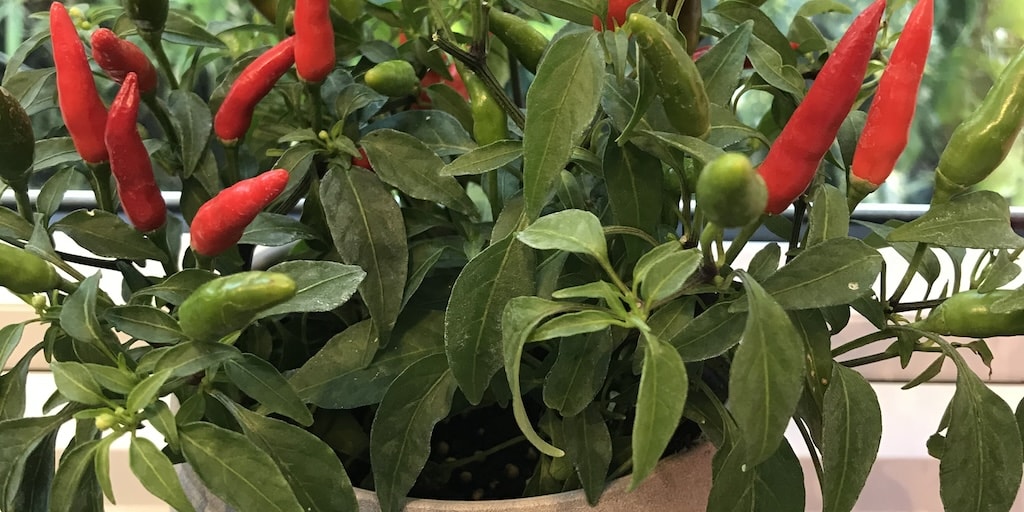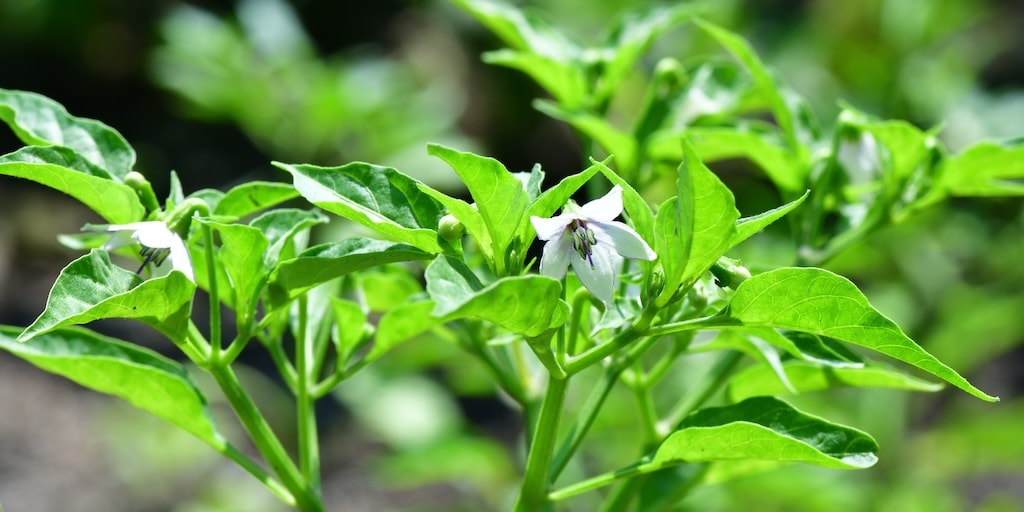Last Updated on July 28, 2025 by the Dobies Horticultural Team
Growing your own chillies is a rewarding and fun experience for both novice and seasoned gardeners, no matter how hot (or not) you like them! With a bit of knowledge and care, you can enjoy a great harvest of these vibrant, fiery fruits straight from your own garden or greenhouse.
Here, expert grower Rob Smith explains everything you need to know about growing chillies, whether you sow your own chilli seeds or invest in potted chilli plants to grow on at home.
Step-by-step guide to sowing chilli seeds
Starting chillies from seed is a great way to explore the many different varieties that are available, from mild and fruity to super-hot and fiery. Here’s how to give your seeds the best chance of germinating:
- Select a variety that suits your taste and growing conditions. Popular choices include jalapeños, habaneros and cayenne chilli peppers.
- Begin sowing seeds indoors in late winter (January to February) to give your plants a head start. As a rule, the hotter the chilli, the longer it takes to grow and ripen.
- Fill seed trays or pots with a fine seed compost. Sow seeds about 0.5 cm (1/4 inch) deep and cover lightly with compost. Water gently.
- Place trays in a warm location (around 25°C / 77°F). Use a propagator or cover with a plastic bag to maintain humidity. Germination typically takes 7-14 days.
Top tip: Chilli seeds benefit from warmth to germinate. Using a heated mat can speed up the process and improve success rates.
How to care for chilli seedlings

Image: Pepper Chilli Seeds – Paper Lantern from Dobies
Once your seeds have germinated, the seedlings need careful attention. Here’s what I do, to bring them on to the next stage:
- Ensure the seedlings receive plenty of light to prevent them from becoming leggy. A sunny windowsill or grow lights work well.
- Keep the soil moist but not waterlogged. Overwatering can lead to damping-off disease, a common issue in seedlings.
- Once seedlings have their second set of true leaves, start feeding them with a half-strength balanced fertiliser every two weeks.
- When seedlings are about 5-8 cm (2-3 inches) tall and have several sets of leaves, transplant them into larger pots.
- If you are growing a variety that produces plants taller than 30cm, you can nip off the growing tip of the plant at 15cm tall, causing the plant to produce more side shoots and bush out, giving you more fruit.
Top tip: Gently brush your hand over the seedlings daily. This mimics wind movement, helping to strengthen the stems.
How and when to plant out your chillies

Image: Chilli Pepper ‘Quick Fire’ F1 from Dobies
Chillies thrive in warm conditions, so it’s essential to acclimatise your plants before moving them outside.
- Hardening off: Begin hardening off your plants in late spring (after the last frost date). Gradually expose plants to outdoor conditions over 7-10 days. Start with a few hours in a sheltered spot, increasing their time outside each day.
- Planting out: Choose a sunny, sheltered spot or a greenhouse. Chillies love warmth and light. Plant in well-draining soil enriched with organic matter. If growing in pots, use a high-quality compost. Space plants about 30-45 cm (12-18 inches) apart to allow for airflow and growth.
Interesting fact: Chillies can be grown in containers, making them perfect for patios and small spaces.
How to care for chilli plants

Image: pisitpong2017/Shutterstock
Proper feeding and watering are crucial for a healthy chilli crop. Here’s how to give your plants the best chance of producing lots of fiery fruits:
- Feeding: Once plants start to flower, feed them every two weeks with a high-potash fertiliser (such as tomato feed) to encourage fruiting. Consider using organic feeds like seaweed extract or compost tea for an eco-friendly approach.
- Watering: Water consistently, especially during dry spells. Aim to keep the soil evenly moist but not waterlogged. Use mulch to retain soil moisture and suppress weeds.
- Maximising yield: Pinch out the growing tips when plants are about 30 cm (12 inches) tall to encourage bushier growth and more fruit. If growing indoors, gently shake the plants or use a soft brush to hand-pollinate flowers.
Top tip: Water your chillies in the morning to reduce the risk of fungal diseases and allow any wet foliage to dry during the day.
How and when to harvest chillies

Image: Chilli ‘Bueta Mulata’ from Dobies (©Rob Smith’s Allotment)
Chillies are ready to harvest when they reach their full size and desired colour, though they can be harvested earlier when they will have a milder, and less spicy flavour.
- Harvest chillies regularly to encourage the plant to produce more. Use scissors or pruning shears to avoid damaging the plant.
- Fresh chillies can be stored in the fridge for up to two weeks. For longer storage, consider drying, freezing, or pickling.
Interesting fact: The heat level of a chilli can vary depending on growing conditions. Stressing the plants slightly (by reducing water) can increase their heat.
Lead image: Chilli Pepper ‘Fiery Flames’ from Dobies

